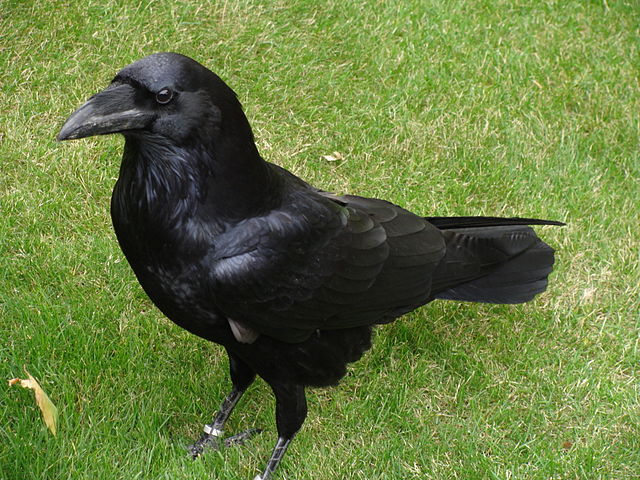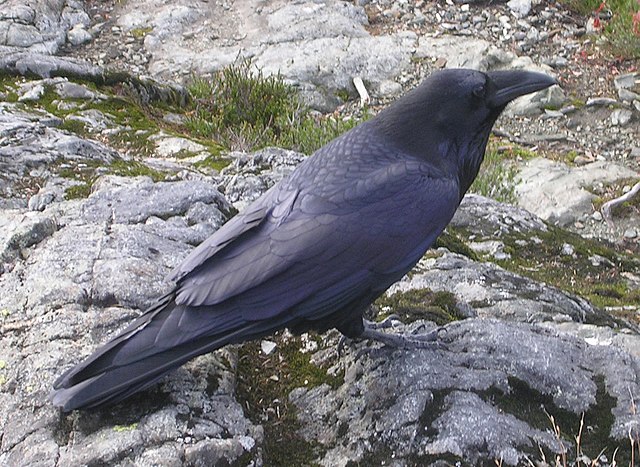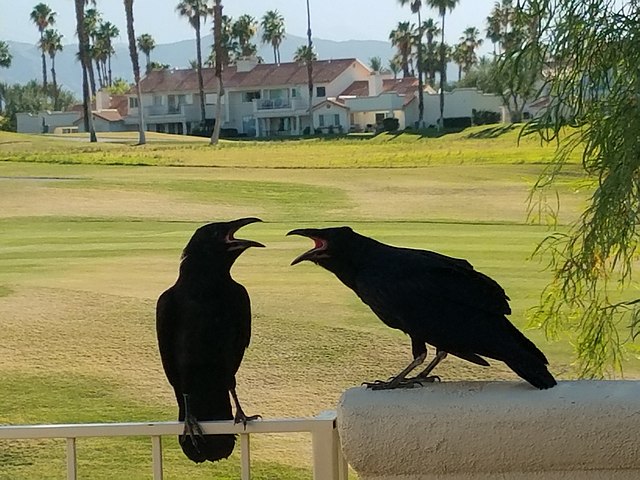Cultural depictions of ravens
Many references to ravens exist in world lore and literature. Most depictions allude to the appearance and behavior of the wide-ranging common raven. Because of its black plumage, croaking call, and diet of carrion, the raven is often associated with loss and ill omen. Yet, its symbolism is complex. As a talking bird, the raven also represents prophecy and insight. Ravens in stories often act as psychopomps, connecting the material world with the world of spirits.
Common ravens in Petrified Forest National Park, Arizona.
"The Twa Corbies", Illustration by Arthur Rackham to Some British Ballads
An illustration from an 18th-century Icelandic manuscript depicting Huginn and Muninn sitting on the shoulders of Odin.
Raven Penny from York, minted by Olaf Guthfrithson, a viking king
The common raven is a large all-black passerine bird. It is the most widely distributed of all corvids, found across the Northern Hemisphere. It is a raven known by many names at the subspecies level; there are at least eight subspecies with little variation in appearance, although recent research has demonstrated significant genetic differences among populations from various regions. It is one of the two largest corvids, alongside the thick-billed raven, and is possibly the heaviest passerine bird; at maturity, the common raven averages 63 centimetres in length and 1.47 kilograms in mass. Although their typical lifespan is considerably shorter, common ravens can live more than 23 years in the wild. Young birds may travel in flocks but later mate for life, with each mated pair defending a territory.
Common raven
In sunlight, the plumage can display a blue or purple sheen which is a result of iridescence.
Two juveniles in Iceland
Common Ravens panting to cool down in 110 °F (43 °C) heat in Palm Desert, California








